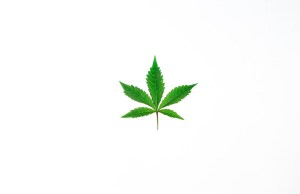Cocaine is made from the leaves of a coca plant native to South America. A powerfully addictive stimulant, its use has serious short and long-term health effects. In addition, there’s risk of great harm when cocaine is taken with alcohol, heroin and other substances. One of the most frequent and serious consequences of cocaine use is overdose, which can cause heart attacks and strokes that can be deadly.
When people use cocaine, it increases the levels of the natural chemical messenger called dopamine in the brain. Dopamine controls pleasure and movement. In normal instances, the brain releases dopamine in response to possible rewards, such as the smell of good food, then cycles back into the cell that released it and shuts off the signal between nerve cells. However, in cocaine use, the dopamine is prevented from re-cycling, which causes extra amounts to build up between nerve cells. Because of this “flood” of dopamine, the normal brain communication is interrupted and causes the high that people get from cocaine.
The National Survey on Drug Use and Health reported that 913,000 people in the nation met the Diagnostic and Statistical Manual of Mental Disorders, 5th Edition (DSM-5)* criteria for dependence or abuse of cocaine in 2014. The Drug Abuse Warning Network report showed that cocaine was included in 505,224 of the nearly 1.3 million visits to the emergency room for drug misuse or abuse. This means that more than one in three or 40 percent of the drug misuse or abuse-related visits to the emergency room involved cocaine. (https://www.drugabuse.gov/publications/research-reports/cocaine/what-scope-cocaine-use-in-united-states)
The DSM-5 has updated the criteria commonly used to diagnose either an alcohol disorder or a substance use disorder. A substance use disorder is a problematic pattern of using alcohol or another substance that impacts impairment in everyday life or causes distress that’s noticeable. Like other addictions, there are consequences for a person who has a problem (alcoholism or drug sufferers), but they’ll usually continue to use the drug. While they may halfheartedly try to stop or cut back on its use, it’s usually unsuccessful.
*The DSM-5 is published by the American Psychiatric Association.
DSM 5 Causes for Cocaine Use Disorder
It’s most likely the factors that play a role in Cocaine Use Disorder are genetic, environmental, biological and psychological.
Genetic
Research has shown that people with relatives who have addiction problems are more likely to develop an addiction. Chance are higher if it’s a first-degree (parent) relative.
Biological
Biological factors, such as changes in the function of the brain, have been connected to addiction problems. When dopamine levels are low, people may abuse substances to have pleasurable feelings.
Environmental
People who have come from unpredictable situations in their home lives have a greater chance of developing an addiction. In addition, stressors, such as child abuse, the loss of a loved one or traumatic events can cause stress, leading the person to turn to substance abuse as a way of self-medication.
DSM 5 Criteria for Cocaine Use Disorder
Some of the signs and symptoms of Cocaine Use Disorder are:
- Mood symptoms—anxiety; restlessness; feelings of superiority; euphoria; panic; irritation; and fearfulness.
- Behavioral Symptoms—extremely talkative; increased energy; stealing or borrowing money; erratic or odd behavior; violence; doesn’t participate in activities that were once enjoyable; and reckless and risky behaviors.
- Physical Symptoms—decreased need to sleep; headaches; nosebleeds; hoarseness; increased heart rate; muscle twitches; malnutrition; increase in body temperature; nasal perforation; abnormal heart rhythms; chronic runny nose; constricting blood vessels; increased heart rate; increased blood pressure; sexual dysfunction; decreased appetite; dilated pupils; risks for contracting Human Immunodeficiency Virus (HIV), hepatitis C and other bloodborne diseases; gangrene of the bowel; cravings; and tremors.
- Psychological Symptoms—severe paranoia; violent mood swings; break from reality; lack of motivation; psychosis; hallucinations; unable to use sound judgment; and the rationalization of drug use.
DSM-5 Categories of Mild, Moderate and Severe Cocaine Use Disorder
There are three categories for Cocaine Use Disorder, according to the DSM-5. They are:
DSM-5 (305.60 F14.10) Cocaine Use Disorder, Mild
A minimum of two to three of the DSM-5 criteria is required for a mild diagnosis of Cocaine Use Disorder.
DSM-5 (304.20 F14.20) Cocaine Use Disorder, Moderate
Between four and five of the DSM-5 criteria is necessary for a moderate diagnosis of Cocaine Use Disorder.
DSM-5 (304.20 F14.20) Cocaine Use Disorder, Severe
To be diagnosed with severe Cocaine Use Disorder, between six and seven of the DSM-5 criteria must be met.
DSM-5 (292.0 F14.23) Cocaine Withdrawal
With its detrimental effects on the brain and the rest of the central nervous system, cocaine interrupts the natural body chemistry and causes serious withdrawal symptoms when people try to stop using it. Cocaine can cause health problems and the development of psychological conditions, such as anxiety and depressive disorders, sleep problems, mania and psychosis.
According to the APA, there are treatment principles and alternatives for cocaine withdrawal, including:
- Management of intoxication and withdrawal is usually self-limited and usually requires only supportive care.
- Hypertension, tachycardia, seizures and persecutory delusions can occur with cocaine intoxication and may need specific treatment.
- Acutely agitated patients may benefit from sedation and benzodiazepines.
- Psychosocial treatments that focus on abstinence from cocaine are effective.
Behavioral Therapy may be used for Cocaine Withdrawal, including:
- Cognitive Behavioral Therapy.
- Contingency Management or Motivational Incentives, which provide rewards to patients who continue to remain free of the drug.
- Therapeutic Communities, which are drug-free residences where people in recovery from cocaine and other substances help each other to understand and change their behaviors.
National Institute on Drug Abuse Facts on Cocaine
- Street dealers often combine cocaine with other things, including cornstarch, talcum powder or flour in order to increase their profits. They may also mix it with other types of drugs like the stimulant amphetamine.
- People snort cocaine through the nose or rub it onto their gums. Other people dissolve it in water and inject it–or inject a mixture of cocaine and heroin (Speedball). In addition, another method is to smoke crack cocaine.
- An overdose of cocaine can cause death.
- Researchers are testing treatments for cocaine addiction, because currently there are no government-approved medicines.
















